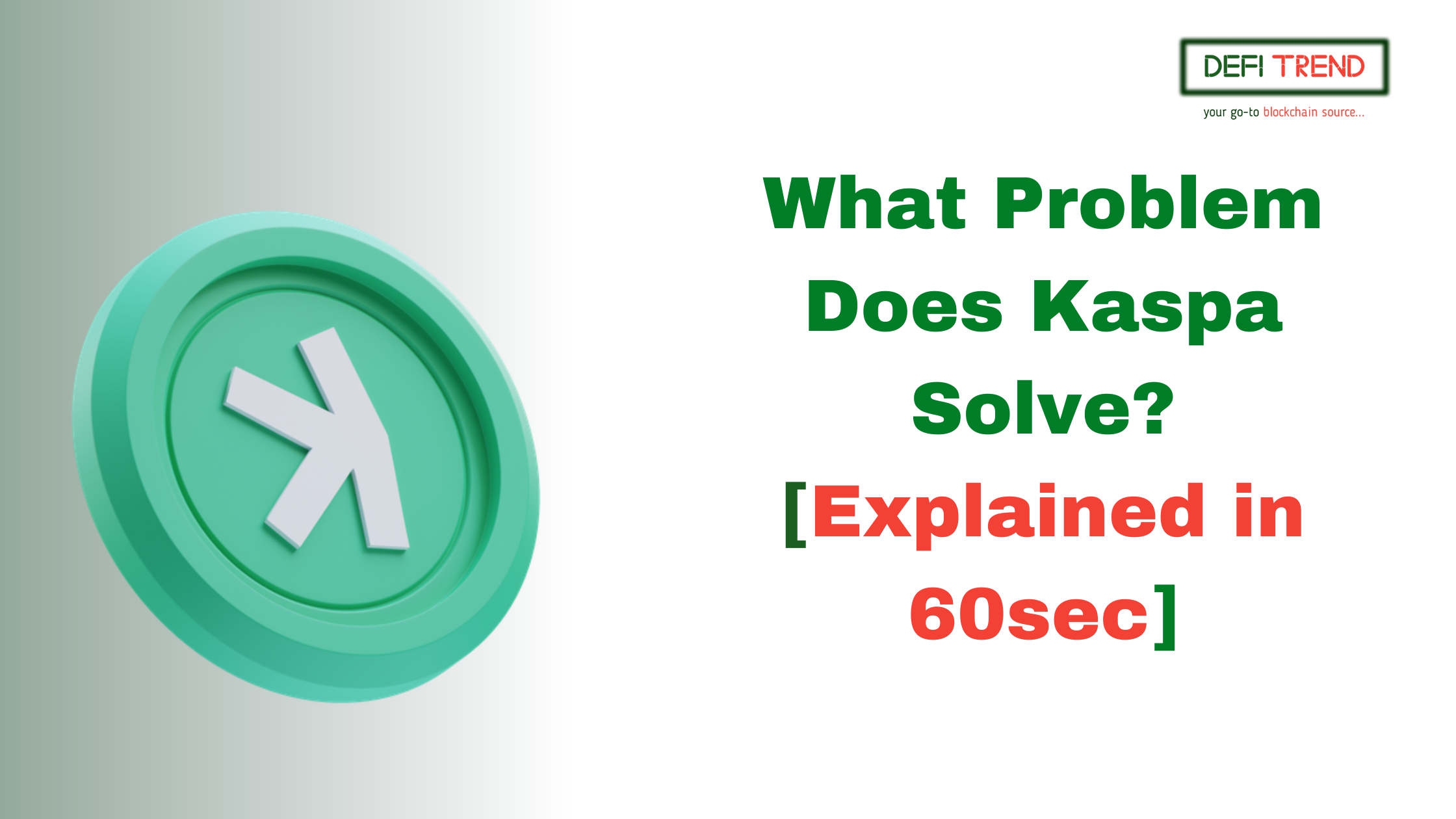Blockchain technology, while revolutionary, has faced significant limitations, primarily in scalability and transaction speed. Kaspa cryptocurrency aims to address these challenges by introducing a groundbreaking approach to blockchain architecture.
Understanding Kaspa’s Unique Architecture
Unlike traditional blockchains that process transactions sequentially, Kaspa employs a BlockDAG (Directed Acyclic Graph) structure. This innovative design allows for parallel block processing, significantly increasing transaction throughput and reducing confirmation times. This means that Kaspa can handle a higher volume of transactions more efficiently, leading to faster and more cost-effective transactions. How to Analyze Crypto for Beginners
Key Advantages of Kaspa
- Instant Transaction Finality: Kaspa’s rapid block confirmation times ensure that transactions are finalized almost instantly, eliminating the need for lengthy waiting periods.
- Enhanced Scalability: The BlockDAG architecture enables Kaspa to scale horizontally, accommodating increased network traffic without compromising performance.
- Improved Energy Efficiency: Kaspa’s consensus mechanism optimizes energy consumption, making it a more environmentally friendly solution.
- Strong Security: The Proof-of-Work (PoW) consensus mechanism ensures the security and integrity of the network.
Real-World Applications
Kaspa’s unique features make it suitable for a wide range of applications, including:
- Decentralized Finance (DeFi): Kaspa’s fast transaction speeds and low fees can enhance the efficiency of DeFi platforms.
- Supply Chain Management: Real-time tracking and verification of goods can be facilitated by Kaspa’s transparent and secure network.
- Payments and Remittances: Cross-border payments can be made faster and more cost-effectively using Kaspa.
- Gaming and NFTs: Kaspa’s high throughput and low latency can support the growing demand for blockchain-based gaming and NFT marketplaces.
The Future of Kaspa Blockchain

Kaspa’s innovative approach to blockchain technology has the potential to reshape the industry. By addressing the limitations of traditional blockchains, Kaspa can unlock new possibilities for decentralized applications and drive the adoption of blockchain technology on a global scale. Dexscreener explained – How To Catch The Next 100x Memecoin
Diving Deeper into Kaspa’s Technology
To fully appreciate Kaspa’s potential, it’s essential to understand the technical intricacies behind its innovative architecture.
- BlockDAG: Unlike traditional blockchains, where blocks form a linear chain, Kaspa’s BlockDAG allows for multiple blocks to be created and confirmed simultaneously. This parallel processing significantly boosts transaction throughput and reduces confirmation times.
- GhostDAG Consensus: Kaspa employs a GhostDAG consensus mechanism, which is a variant of Proof-of-Work. This mechanism ensures that the network remains secure and decentralized while prioritizing the longest chain of blocks.
- Phantom Chains: Kaspa’s BlockDAG structure allows for the creation of phantom chains, which are alternative chains that can be discarded if they fall behind the main chain. This mechanism helps to prevent network forks and maintain consensus.
Addressing Scalability Challenges
One of the most significant challenges facing blockchain technology is scalability. Traditional blockchains, such as Bitcoin and Ethereum, struggle to handle a high volume of transactions, leading to network congestion and increased transaction fees.
Kaspa’s BlockDAG architecture addresses this challenge by enabling parallel processing. As the network grows, Kaspa can scale horizontally, accommodating a larger number of transactions without compromising performance. This scalability is essential for the widespread adoption of blockchain technology.
Improving Energy Efficiency
Proof-of-Work (PoW) consensus mechanisms, while effective in securing blockchains, have been criticized for their high energy consumption. Kaspa’s GhostDAG consensus mechanism aims to address this issue by optimizing the mining process. By reducing the computational requirements and minimizing energy waste, Kaspa can contribute to a more sustainable blockchain ecosystem.
Enhancing Security and Decentralization
Kaspa’s Proof-of-Work mechanism ensures the security and decentralization of the network. By requiring miners to solve complex cryptographic puzzles, Kaspa prevents malicious actors from manipulating the network or double-spending coins. Additionally, the decentralized nature of the network ensures that no single entity has control over the system.
Conclusion
Kaspa’s innovative approach to blockchain technology has the potential to revolutionize various industries. By addressing the scalability and efficiency limitations of traditional blockchains, Kaspa can unlock new opportunities for decentralized applications and drive the adoption of blockchain technology on a global scale. As the cryptocurrency landscape continues to evolve, Kaspa’s unique features and strong community support position it as a promising contender for the future of blockchain.

